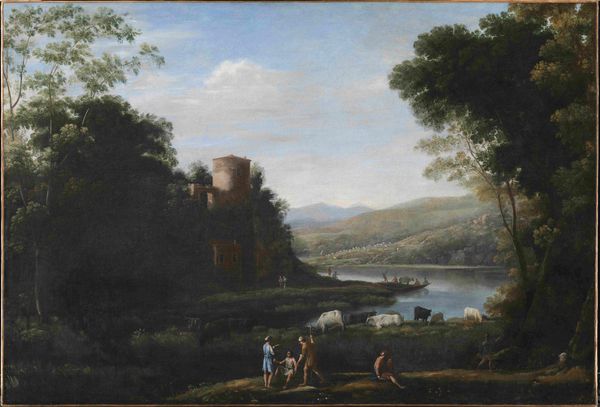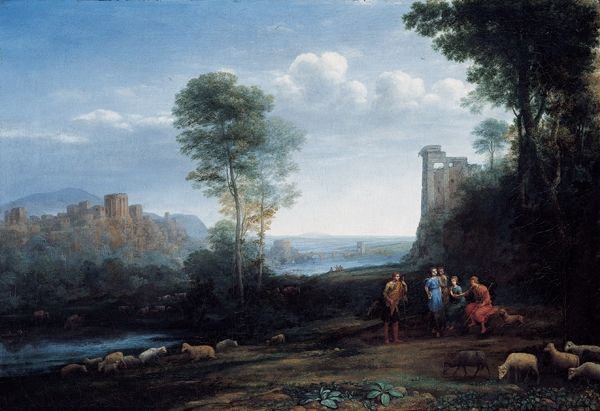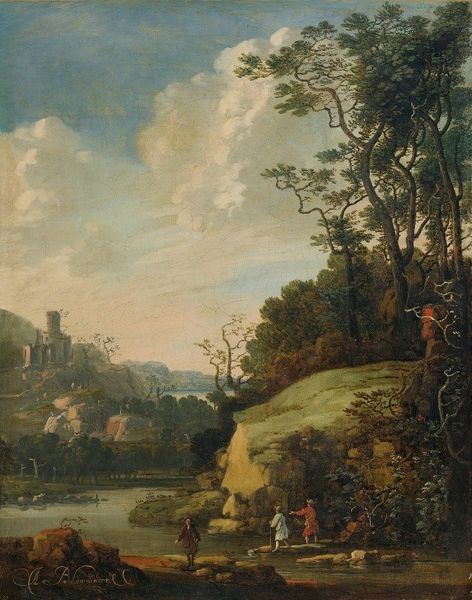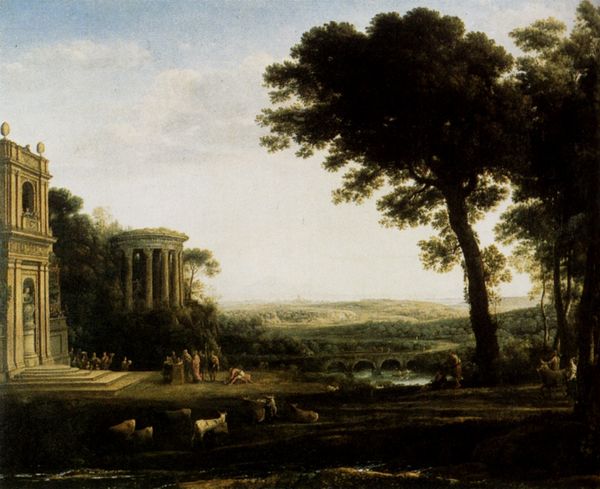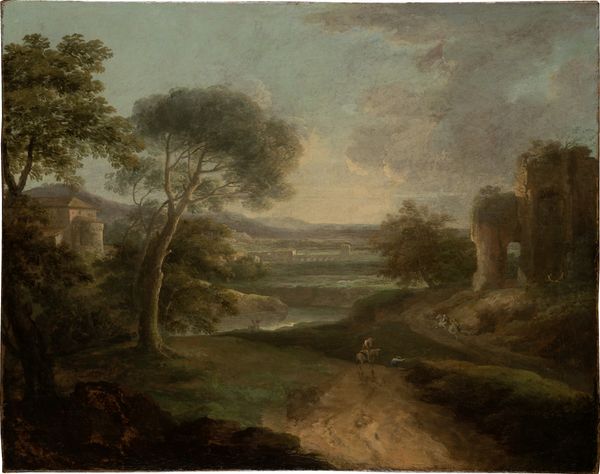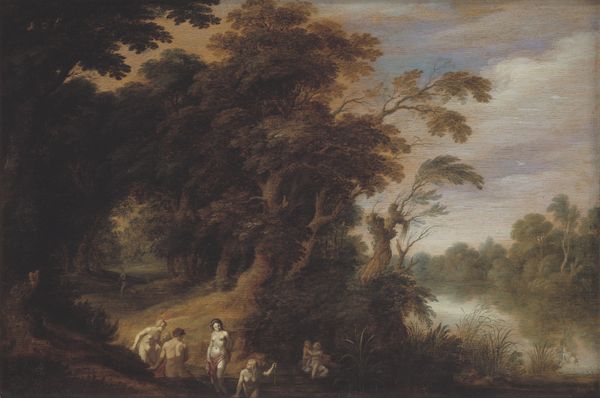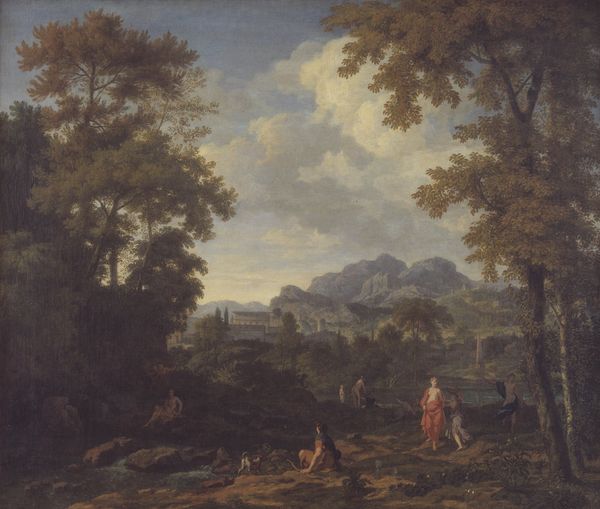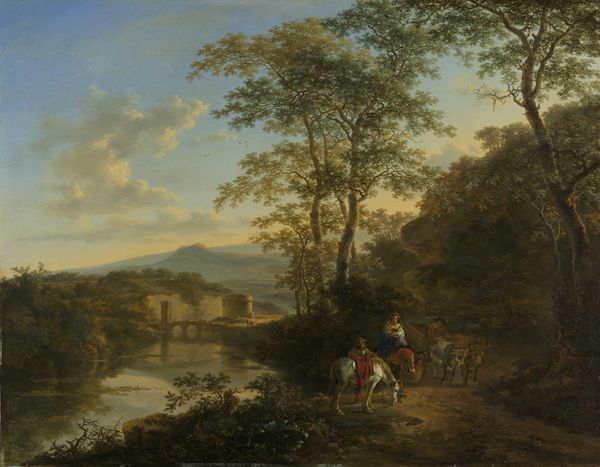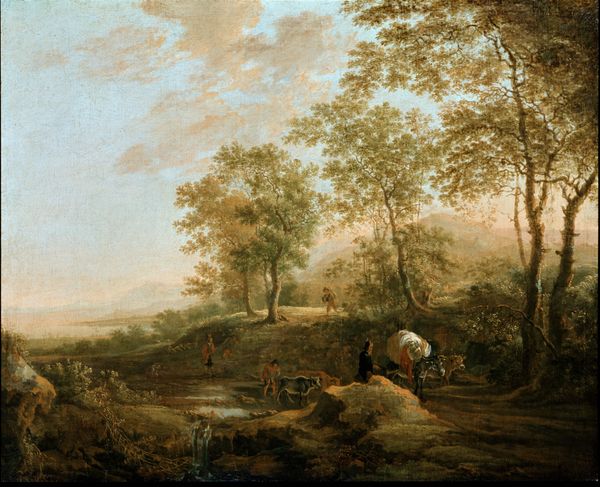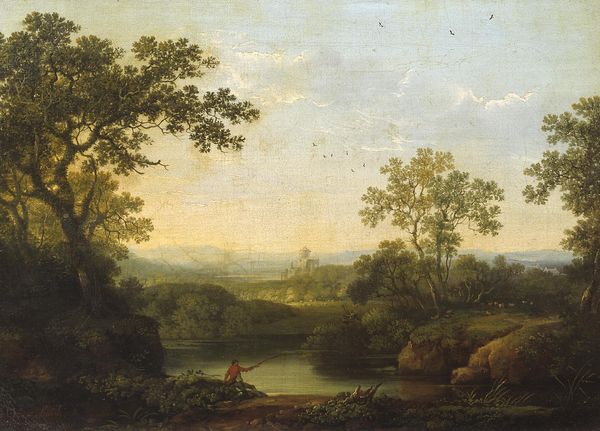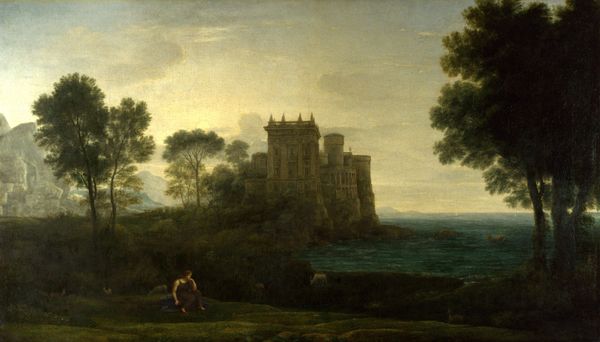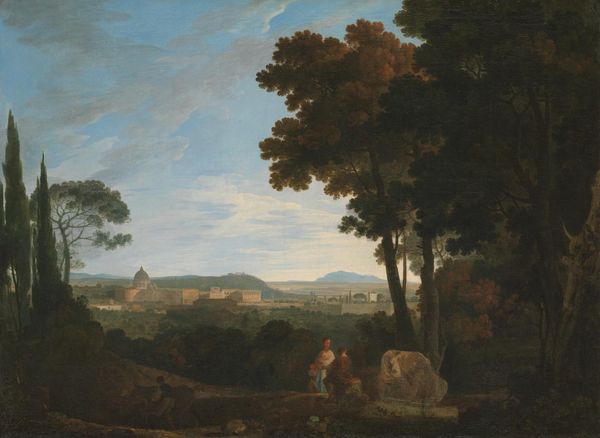
painting, oil-paint
#
baroque
#
painting
#
oil-paint
#
landscape
#
oil painting
#
roman-mythology
#
mythology
#
painting painterly
#
history-painting
#
realism
Dimensions: 155 x 200 cm
Copyright: Public domain
Editor: "Landscape with the Nymph Egeria" from 1669, painted by Claude Lorrain. It’s quite breathtaking, a sense of calm washes over me. The hazy light seems to soften all the edges. What do you see in this piece? Curator: It's funny you say that! To me, Lorrain here has created a world that's both idyllic and deeply theatrical. I imagine myself transported, wandering in from the wings almost, into a world where classical myth isn't some dusty history lesson, but breathing and alive. The composition draws your eye back into receding planes…but look closer—see how the architecture crumbles, nature reclaims it? Editor: Yes, like nature is the main character, more permanent than the buildings. The tiny figures almost disappear into the grandeur of the landscape! Curator: Exactly! Do you think that was on purpose, though, them feeling so insignificant? Almost like Lorrain whispers that even gods and myths are fleeting moments against eternity itself. Editor: That's…a bit dark? I mean, it *is* beautiful, but if it’s all just fading away… Curator: Ah, but isn’t there a strange comfort in that too? Like being part of something bigger, even when your bit is small, or temporary. Perhaps I am overthinking this and simply projecting my melancholy on to Lorrain. What are your feelings after viewing it once more? Editor: I guess the transience makes it even more precious… this single moment in the grand scheme of things. Curator: And isn't that just like life—a fleeting moment of existing and viewing Landscape with the Nymph Egeria and musing at the human form among natural, eternal grandeur! A paradox, and one worth pondering further, don't you think?
Comments
No comments
Be the first to comment and join the conversation on the ultimate creative platform.
